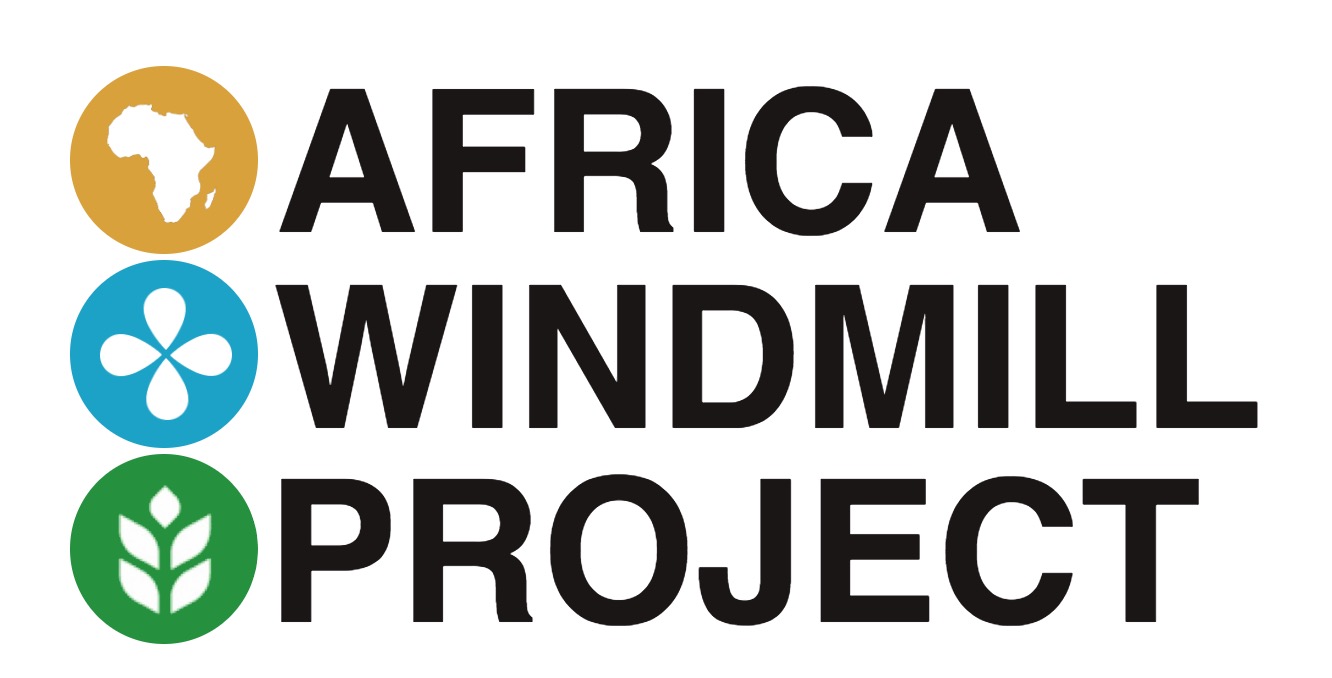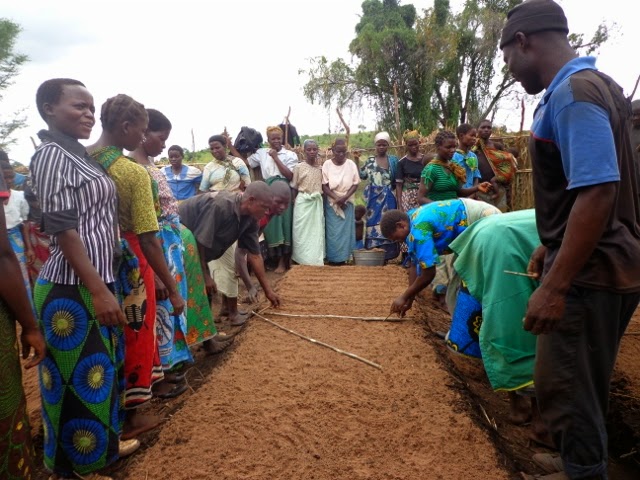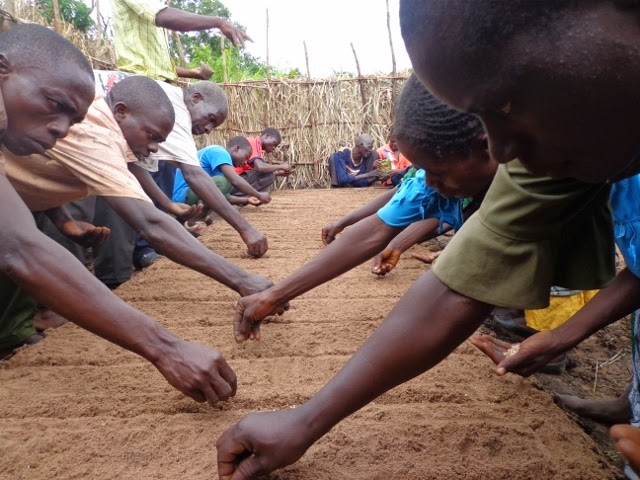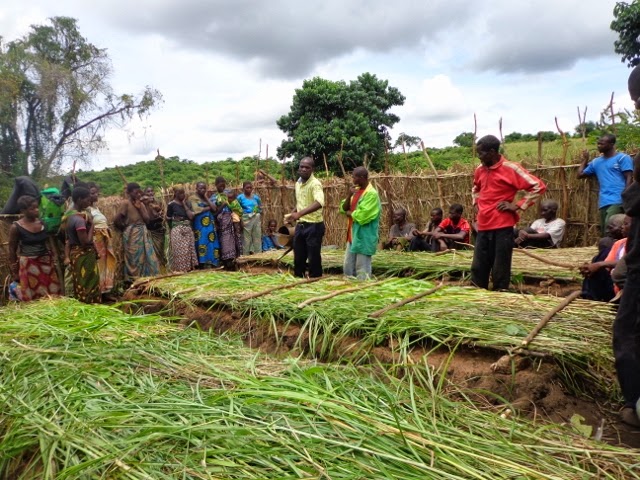How to Make a Vegetable Nursery
Next elevated beds (1 meter wide, 2-3 meters long) are made to further protect the nursery from flooding.
The elevated bed are useful for containing compost in the planting area. The beds are filled with a thin (2 inches) layer of dry compost. Excessive animal manure is avoided to keep acidity down. This layer provides the nutrients that the dense plant spacing will require.
Lastly, the bed is leveled off with a layer of sand (1 inch). The sand is very light and fine. This prevents the formation of a hard-caked top soil that could prevent the seedlings from emerging.
Now farmers measure lines across the beds. The lines are furrowed about 1/2-1 inch deep (depending on seed variety).
At last, we plant our seeds in the furrows. An even scattering of seeds along each line will provide the farmer with a way to estimate germination success. Gaps in the line would suggest a low germination percentage.
The beds will require shade to prevent the sand from reaching high temperatures, increasing evaporation and possibly burning the seeds. A layer of grass does the trick. If the grass is placed directly on the sand, some seeds will not manage to emerge between the blades of grass. Stones and a lattice of bamboo poles give a good (4-5 inch) gap between the covering and the seeds. Also the farmers can lift or part the grass to view the seedlings without damaging them.
When the job is done, it looks something like this...
After 2-3 weeks, the seedlings will be strong enough to be transplanted to their stations in the field. Many thanks to the farmers at Chifuchambewa who gave a perfect demonstration even as they were learning this technique for the first time.









